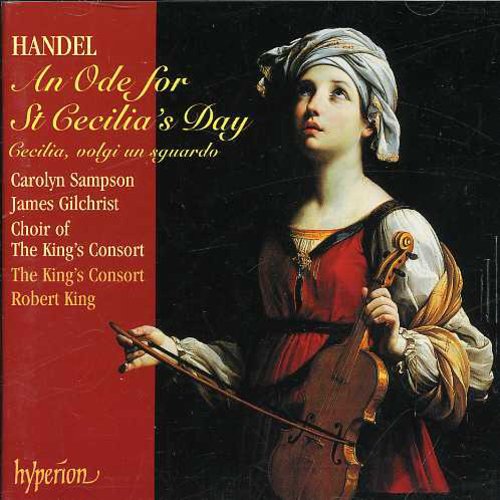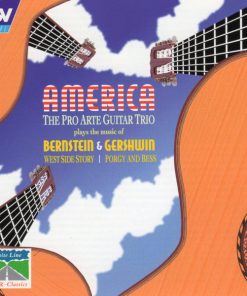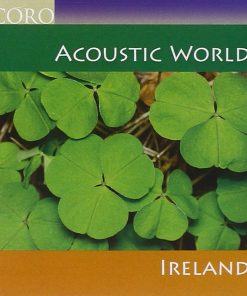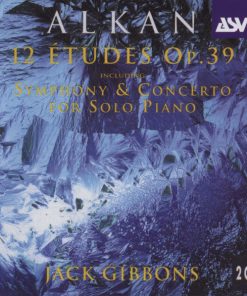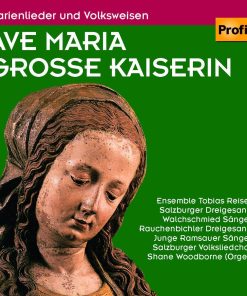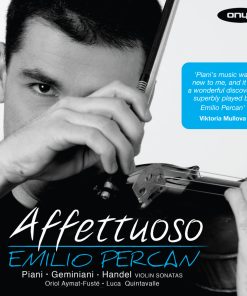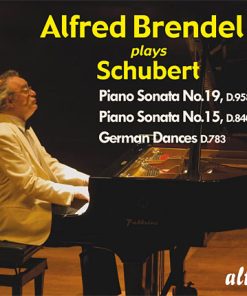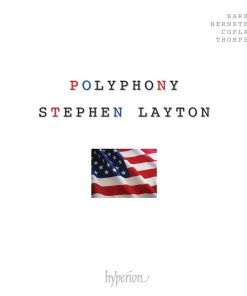Handel: An Ode for St Cecilia’s Day – The King’s Consort, Robert King Hyperion
$ 19,99 $ 11,99

An Ode for St Cecilia’s Day HWV76[48’38]
1
No 1 Overture Part 1: Larghetto, e staccato[1’31]
2
No 1 Overture Part 2: Allegro[2’00]
3
No 1 Overture Part 3: Minuet[1’14]
4
No 2, Recitative: From harmony, from heav’nly harmony[0’26]
James Gilchrist (tenor)
5
No 3, Aria: When Nature underneath a heap[2’53]
James Gilchrist (tenor)
6
No 4, Chorus: From harmony, from heav’nly harmony[3’35]
King’s Consort Choir
7
No 5, Aria: What passion cannot Music raise and quell![7’20]
Carolyn Sampson (soprano), Jonathan Cohen (cello)
8
No 6, Aria and Chorus: The trumpet’s loud clangour[3’40]
James Gilchrist (tenor), King’s Consort Choir, Crispian Steele-Perkins (trumpet), Charles Fullbrook (timpani)
9
No 7: March[1’53]
10
No 8, Aria: The soft complaining flute[5’09]
Carolyn Sampson (soprano), Rachel Brown (flute), Lynda Sayce (lute)
11
No 9, Aria: Sharp violins proclaim[3’58]
James Gilchrist (tenor)
12
No 10, Aria: But oh! What art can teach[4’46]
Carolyn Sampson (soprano), Matthew Halls (organ)
13
No 11, Aria: Orpheus could lead the savage race[1’49]
Carolyn Sampson (soprano)
14
No 12, Accompagnato: But bright Cecilia rais’d the wonder[0’50]
Carolyn Sampson (soprano)
15
No 13, Solo and Chorus: As from the pow’r of sacred lays[7’34]
Carolyn Sampson (soprano), King’s Consort Choir
Cecilia, volgi un sguargo HWV89[28’49]
Carolyn Sampson (soprano), James Gilchrist (tenor)
16
No 1, Recitative: Cecilia, volgi un sguardo[0’32]
17
No 2, Aria: La Virtute è un vero nume[5’02]
18
No 3, Recitative: Tu, armonica Cecilia[0’39]
19
No 4, Aria: Splenda l’alba in oriente[6’08]
20
No 5, Recitative: Carco sempre di gloria[0’35]
21
No 6a, Aria: Sei cara, sei bella[3’13]
22
No 6b, Aria: Un puro ardor[2’44]
23
No 6c, Aria: Sei cara[3’27]
24
No 7, Recitative: È ben degna di lode[0’21]
25
No 8, Duetto: Tra amplessi innocenti[6’08]

St Cecilia first appears in literature in a medieval collection of tales of early Christian martyrs who met gory deaths; at this stage there is little in her story to suggest a connection with music, but by the middle of the fifteenth century she had been accredited with the invention of the organ and was thus adopted as the patron saint of music. Over the succeeding centuries, the annual celebration of her patronage (falling on the supposed date of her martyrdom, 22 November) inspired composers to dazzling new heights of creativity. At the 1739 festival Handel’s dazzling Ode to St Cecilia (setting the famous text by Dryden) presented enthralled London audiences with chorus, top-notch soloists and a splendid array of obbligato instruments – and some of Handel’s finest music. For this new recording, Carolyn Sampson and James Gilchrist fully rise to the occasion, supported by choir and The King’s Consort in sparkling form.
Paired with the seldom-heard setting for soprano and tenor Cecilia, volgi un sguardo (a Dryden setting from 1736 written as a showcase for the skills of Handel’s two Italian opera stars), this generously filled new recording is a must!
Fast Shipping and Professional Packing
Due to our longstanding partnership with UPS FedEx DHL and other leading international carriers, we are able to provide a range of shipping options. Our warehouse staff are highly trained to pack your goods exactly according to the specifications that we supply. Your goods will undergo a thorough examination and will be safely packaged prior to being sent out. Everyday we deliver hundreds of packages to our customers from all over the world. This is an indication of our dedication to being the largest online retailer worldwide. Warehouses and distribution centers can be located in Europe as well as the USA.
Orders with more than 1 item are assigned processing periods for each item.
Before shipment, all ordered products will be thoroughly inspected. Today, most orders will be shipped within 48 hours. The estimated delivery time is between 3-7 days.
Returns
The stock is constantly changing. It's not entirely managed by us since we are involved with multiple parties such as the factory and our storage. The actual stock can fluctuate at any time. Please understand it may happen that your order will be out of stock when the order is placed.
Our policy is valid for 30 days. If you haven't received your product within 30 days, we're not able to issue either a return or exchange.
You are able to return a product if it is unused and in the same condition when you received it. It must also still remain in the original packaging.
Related products
MUSIC CD
MUSIC CD
MUSIC CD
